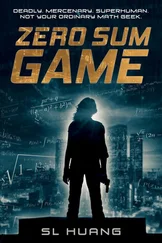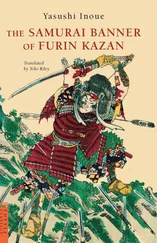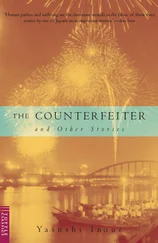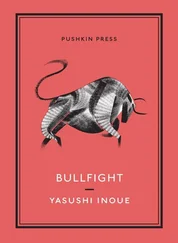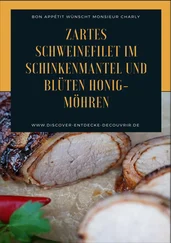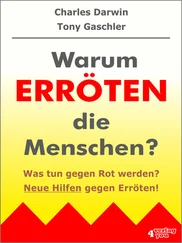Hsing-te passed the months from early 1027 to the spring of the following year as a common soldier in the Chinese unit of the Hsi-hsia army.
Since entering Liang-chou, Hsing-te had only seen soldiers in the garrison. Of the natives who had lived here before Liang-chou fell into Hsi-hsia hands, those who could fight had all been drafted into the Hsi-hsia army, while useless elders, women, and children were transferred outside the town to work on farms or to herd cattle in the rich pastures.
The soil in Liang-chou was very fertile. From just outside the city walls, the well-cultivated land stretched for miles. Thus Hsi-hsia possessed the richest agricultural lands west of the Yellow River. The horses raised in this area, too, were considered the best in the world. The second-best came from Kan-ching in China. The horses of the Chin and Wei areas were large-boned, but they lacked speed and could not be used as military mounts. North of the walled city, grazing pastureland extended toward the horizon. From atop the city wall, one could see innumerable groups of horses in the distance. A great number of people were required to look after the horses. In occupying Liang-chou, the Hsi-hsia had not harmed a single native. Instead, they had conscripted the able-bodied and sent the rest outside to work in the farms or with cattle.
This was not the fate of the Liang-chou natives alone. The Hsi-hsia also lived under this code. When Hsi-hsia youths reached the age of fifteen, they were drafted, and then either taken into regular service or given unskilled, menial jobs within the army. All Hsi-hsia soldiers in the regular army were given military mounts and arms and were completely equipped. Those rejected by the army were sent to till the fields around Liang-chou or Kan-ching.
It was estimated that 500,000 troops from the Hsi-hsia regular army had invaded Liang-chou. Besides these men, there were other armies composed of prisoners of war from various subject tribes. Some 100,000 were stationed in Liang-chou and 250,000 in Hsing-ch’ing. Another 70,000 men patrolled the border regions.
The Chinese battalion to which Hsing-te belonged was the vanguard of the regular army, made up of hand-picked heroes from the Chinese. In times of battle, this Chinese force always went to the foremost front lines. Only brave and experienced young men were selected for this unit from former prisoners of war and long-time residents of the area, without regard to their birthplace or circumstance. It was by sheer accident that Hsing-te had stumbled into Liang-chou the day after the battle, and that he was assigned to this force.
Almost daily, Hsing-te received military training outside the walled city. He was slightly built and delicate in constitution, but he took his training seriously. If his superiors decided that he was useless as a soldier, he would be sent to the other side of the Yellow River to clear the wastelands. He preferred to remain in Liang-chou as a common soldier, as trying as this life was, rather than be shipped off there.
During that year Hsing-te took part in three battles against the Uighurs of Kan-chou. Each time he had fainted; the first two times he had been badly wounded but somehow managed to return to his unit with his horse. All Hsi-hsia soldiers secured themselves to their mounts with hooked metal bands so that if they died in the saddle they would not fall off. Thus the horses always returned home after battle carrying the dead and wounded tied onto their backs.
Hsing-te’s assignment had been to hook a whirlwind cannon onto the saddle and dash through the enemy lines scattering a shower of stones. He was not strong enough to maneuver heavy weapons while riding, but no strength was necessary to manipulate a whirlwind cannon. In fact, his slight build and light frame made him very suitable as a cannon operator.
In all three battles, Hsing-te had leaned forward in his saddle, looked at nothing, and concentrated solely on shooting the stones. It took courage for even a very reckless soul to run through the middle of the enemy lines, but Hsing-te’s horse carried his master straight through without prompting. Each time Hsing-te had fainted, coming to only after he was back at base and was taken off his horse. Hsing-te had no idea how he had crossed the enemy lines or how he had returned.
During the third battle, Hsing-te was wounded and regained consciousness only as the wounds were being dressed by a comrade. He had no recollection of being struck. Probably it had happened after he had fainted. From these experiences, he came to the conclusion that going to battle was not so hard after all. After shooting his stones, he was free to faint or do anything else, leaving the rest to fate. His horse took care of everything and brought him home.
In his free time between battles, Hsing-te roamed around looking for someone who knew the Hsi-hsia writing system. But not a single person in his unit had this knowledge. In fact, no one even knew whether Hsi-hsia writing existed or not. Someone among the officers might possibly know, but as a common soldier, Hsing-te could not hope for the opportunity to speak to them. Any superiors whom he could casually approach could not even read Chinese, much less Hsi-hsia.
Hsing-te had thought that writing would be used in Liang-chou and Hsing-ch’ing, where there were many government organizations as well as numerous businesses conducted by inhabitants. But in a frontier garrison such as Liang-chou, writing was far removed from daily life.
Hsing-te had spent an unexpected year in Liang-chou. In the spring of 1028, rumors were rampant throughout the unit that an all-out invasion of Kan-chou was imminent. Anyone could see that this was inevitable. For the Hsi-hsia, who had already occupied the area around Hsing-ch’ing and Liang-chou and who had crossed Chinese territory to capture Ling-chou, it was natural that the next target would be Kan-chou, capital of the small Uighur kingdom, which fought against Hsi-hsia at the least provocation. Hsing-te also anticipated that the invasion of Kan-chou would take place soon.
Toward the end of March there was a sudden bustle of activity outside the city. New troops began to arrive daily from many parts. At night, from the top of the wall, one could see the campfires of these forces stretching out interminably toward the southeast. The units stationed within the wall were busy preparing their weapons. One day in early April, all the troops were gathered together in the clearing outside the city. Li Yüan-hao, commander in chief of the army and eldest son of the Hsi-hsia emperor, Li Teming, had come to inspect his armies. He spent quite some time reviewing each army.
Hsing-te’s unit of Chinese troops had its turn toward the end, so he and his fellow soldiers were kept standing from early morning until dusk.
At twilight Hsing-te’s group was inspected. The yellow sun was setting in the west, and everything — the clearing where Hsing-te’s force stood, the city wall, the oasis stretching out east, and the plains in the west — was suffused by the crimson afterglow. To Hsing-te, who had only heard of Li Yüan-hao and now saw him for the first time, the youthful commander seemed magnificent. He appeared to be twenty-four or twenty-five. He was just a shade over five feet tall and slight in build, but he had a stately, imposing bearing. At the same time, bathed by the rays of the setting sun, he appeared to be crimson-colored.
As he walked slowly before Hsing-te’s unit, he seemed to be inspecting each individual from head to toe. After looking over each man, he gave him a little smile before passing on to the next. That gentle smile touched the hearts of the soldiers. His glances also mysteriously stirred the recipient, so that each man felt inspired to lay down his life gladly for this leader.
Читать дальше

